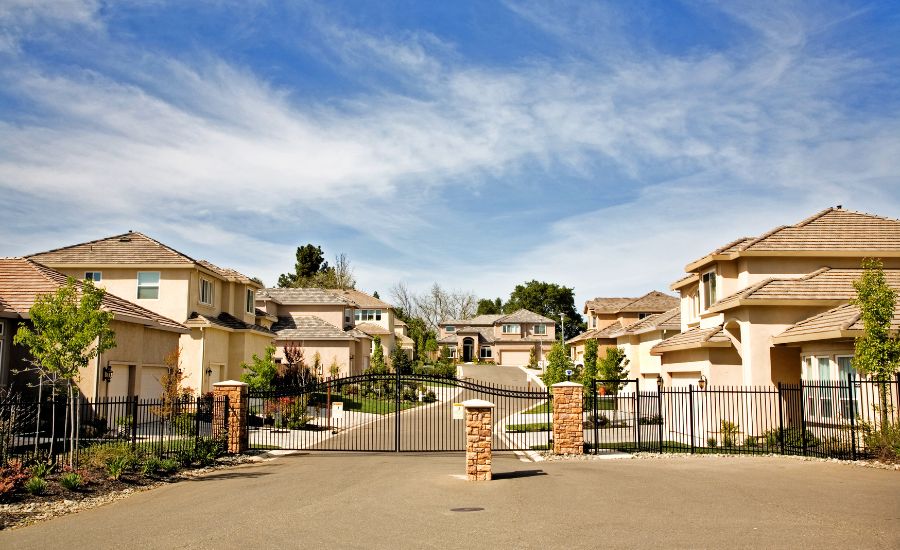
In a parallel world, an eerie parallel to the Underground Railroad, a network of gated private communities across the United States has become a covert sanctuary for undocumented immigrants, offering them respite from the turmoil and uncertainty that surrounds their lives. These secluded enclaves, while ostensibly designed to offer privacy and security to their wealthy residents, have inadvertently evolved into secret havens where illegal immigrants can find temporary refuge.
In these exclusive neighborhoods, often surrounded by high walls, electronic surveillance, and strict access controls, the presence of undocumented workers has become an unspoken yet accepted reality. From landscaping crews to household staff, these individuals play a vital role in maintaining the pristine appearance and smooth operation of these affluent communities.
Their existence within these gated sanctuaries recalls the abolitionist hiding places that provided safe passage for enslaved African Americans during the 19th century. While the circumstances may differ, the common thread is one of covert protection and clandestine support.
“This community has always been about privacy and security,” said Sarah Johnson, a resident of an affluent gated neighborhood in California. “But over time, we’ve come to understand that our privacy also offers a level of protection for some of our workers who are undocumented.”
The relationship between the residents and their undocumented workers is often informal, with neither party formally acknowledging the immigration status of the latter. However, as tensions surrounding immigration continue to escalate, these gated communities have become increasingly conscious of the role they play in providing a safe haven for immigrants who are fearful of being targeted by law enforcement or deportation.
“Our workers are like family to us,” said Tom Anderson, a resident of an exclusive gated community in Texas. “We can’t imagine our lives without them. In a world that seems so hostile to undocumented individuals, we’re glad we can provide them with some level of protection and stability.”
However, the existence of these hidden sanctuaries has not gone unnoticed by immigration advocates and critics who argue that such practices perpetuate systemic inequalities and create an underclass of workers who are vulnerable to exploitation. “It’s a classic example of privileged individuals using their wealth and resources to insulate themselves from the harsh realities faced by undocumented immigrants,” said Maria Rodriguez, a spokesperson for the National Immigration Law Center.
The issue is further complicated by the fact that many of these gated communities rely on undocumented labor not just for menial tasks but also for higher-skilled positions such as maintenance and security work. This dependence on an underpaid, unprotected workforce raises questions about the ethical implications of creating exclusive enclaves that thrive on the labor of individuals who are denied basic protections and rights.
As the debate over immigration reform rages on, these gated communities serve as a stark reminder of the complex interplay between wealth, power, and marginalization in contemporary America. In an increasingly polarized society, they represent a hidden world where privilege and vulnerability coexist, creating both a refuge for some and a perpetuation of injustice for others.
In the words of Maria Rodriguez, “We need to address the systemic issues that create the conditions for this kind of exploitation to occur. Until we do, these gated sanctuaries will remain a symptom of a deeply flawed immigration system.”